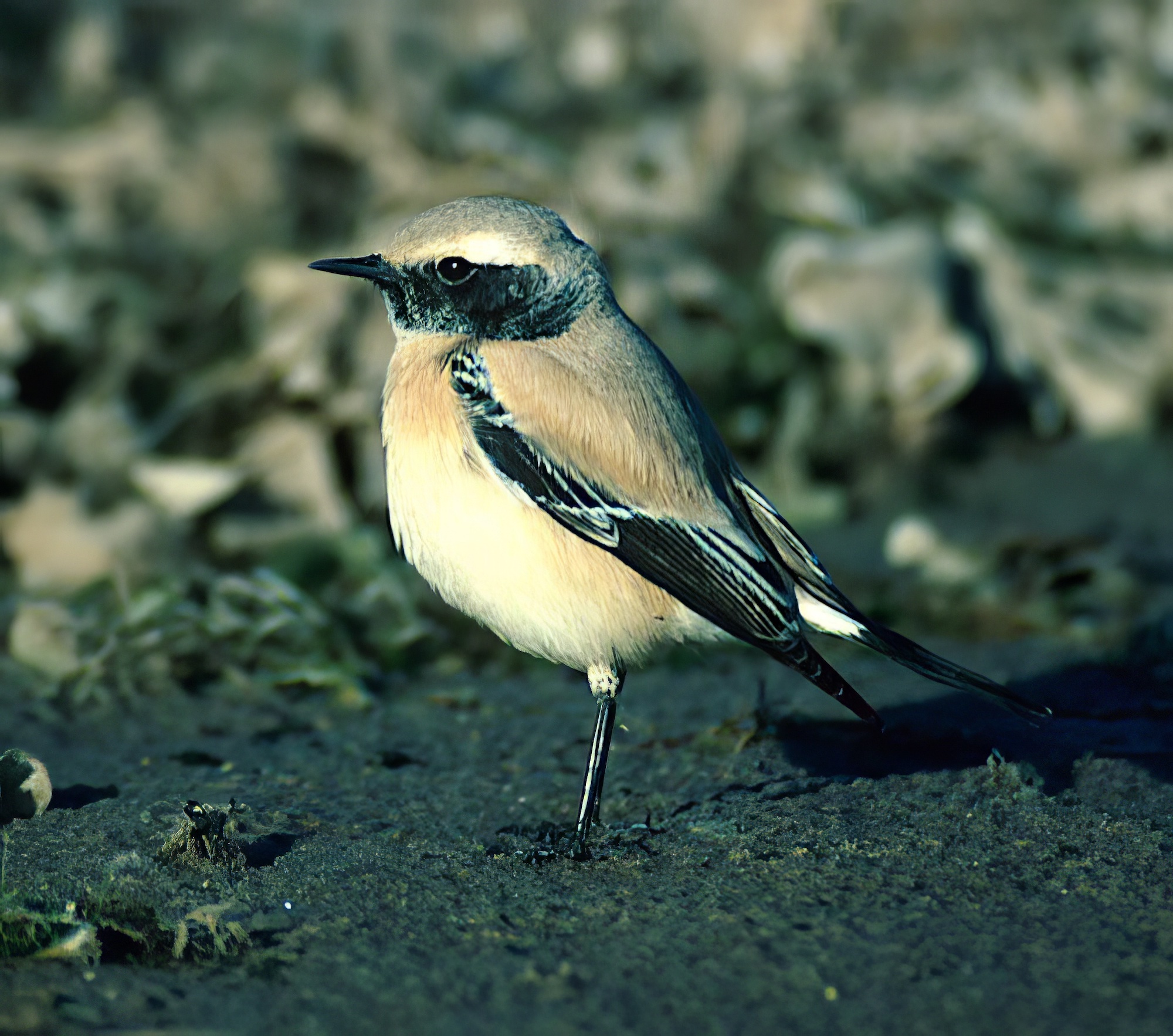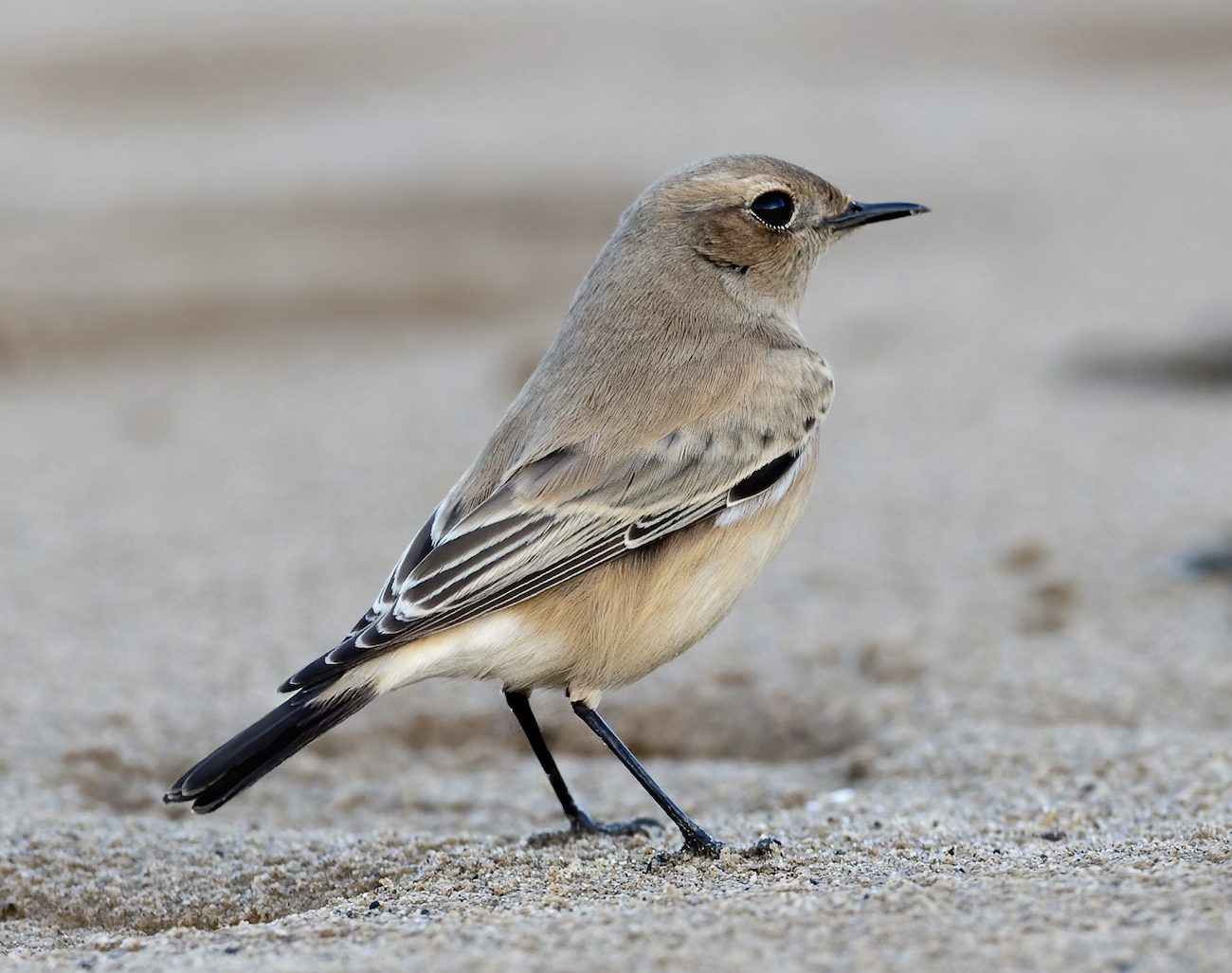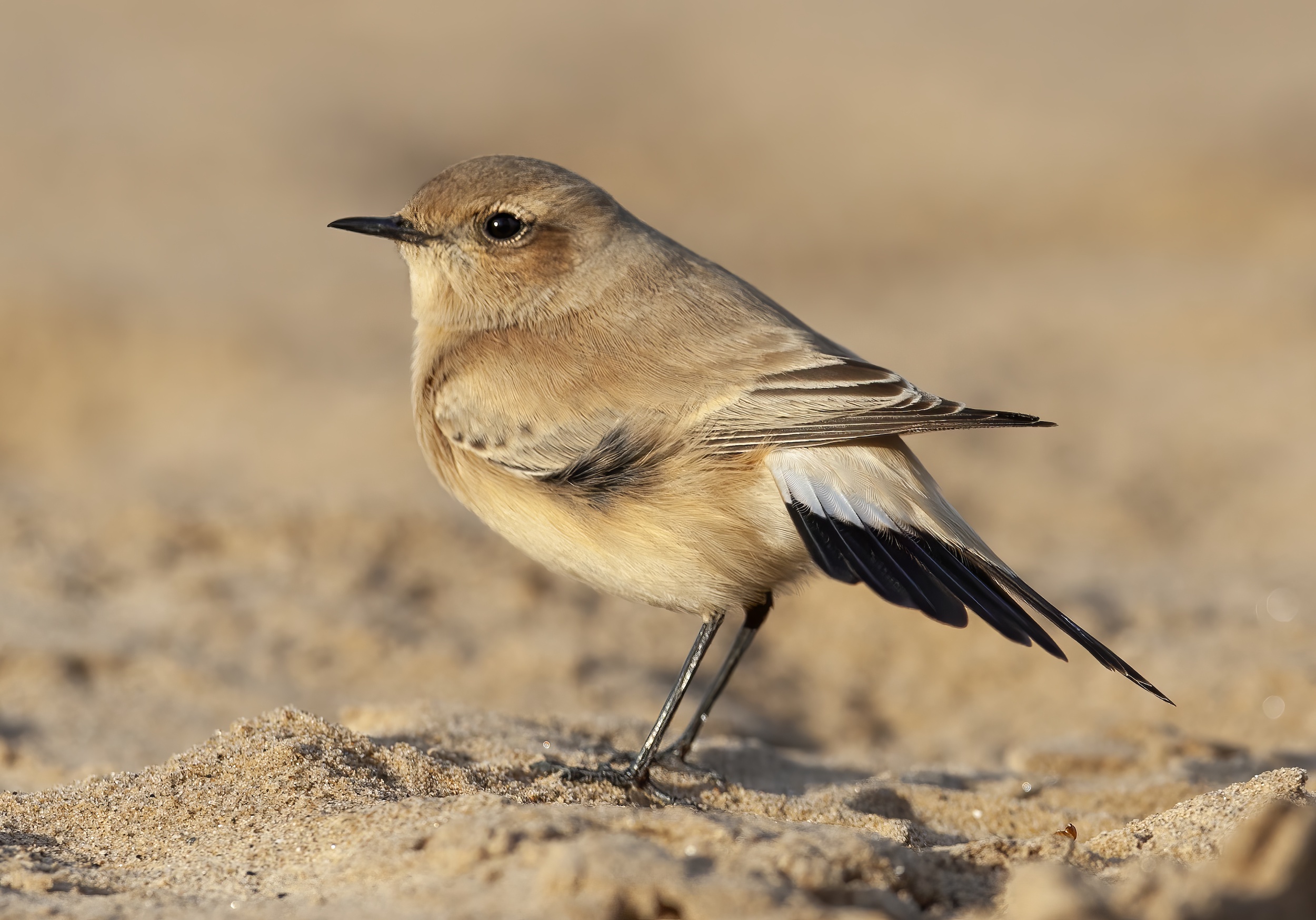Desert Wheatear Oenanthe deserti



Desert Wheatears: left, Saltfleetby-Theddlethorpe NNR November 16th 1999; centre/right November 11th 2008 Saltfleet Haven (Graham Catley).
Polytypic with three subspecies O.o. deserti, homochroa and oreophila, all of which are said to have occurred in Britain (Slack 2009). However, the differences are clinal and only the western race homochroa and eastern oreophila are distinct. No subspecific identity has been attributed to any of the four Lincolnshire records. During 1950-2019 there have been 147 British records, averaging 4-5 per year, but there have been occasional influxes, the most recent ones in 1997 (17), 2003 (10) and 2011 (15).
| Site | First date | Last date | Count | Notes |
| Donna Nook | 23/09/1970 | - | 1 | 1CY male |
| Donna Nook | 10/10/1991 | 13/10/1991 | 1 | 1CY female |
| Saltfleetby-Theddlethorpe NNR | 13/11/1999 | 16/11/1999 | 1 | Male |
| Saltfleet Haven | 08/11/2008 | 14/11/2008 | 1CY female |
Finder’s report: Desert Wheatear at Donna Nook, September 23rd, 1970, first county record.
by S. Lorand and B. Childs.
Note: this account was compiled from the original Rarities Committee submission. At the time the RC noted that this was another accidental southern visitor, which to date has now occurred 18 times, mainly during October-December. The Donna Nook bird was considered to be an immature male. There was one other record in 1970, a male on Fair Isle on November 20th; these two were the first records since 1966.
Circumstances
At 14.00 hr. as we were returning from a seawatch over the extensive sand flats at Donna Nook we were suddenly aware of a small bird hovering at c. 10 ft. some 50 yd. in front of us. It dropped to the ground and commanded attention by its striking paleness and contrasting black on the head, wings, and tail. My immediate impression was that it was a Black-eared Wheatear Oenanthe hispanica but from our notes made at the time it was apparent that the bird was in fact a male Desert Wheatear Oenanthe deserti.
The bird was constantly active and did not appear to be the least bit tired. It would flit low along the sand, presumably chasing insects, hovering one moment, then landing and running before making fresh, short sallies into the air. Gradually moving NNE across the sand, the bird passed us at a minimum of c.35 yd. On reaching the tide edge at 14.05 hr. the bird suddenly vanished and following a negative search we assumed that it had continued across the Humber (the Yorkshire coast was clearly visible at the time).
Neither observer has met this species before though SL has seen good numbers of O. hispanica in Spain and in the Camargue as recently as August 1969. Wind was SE force 2 with good visibility. Complete cloud cover and rather dull light at the time. Optics used were 10 x 50 (SL) and 9 x 35 (BC.) binoculars.
Description
The following notes were compiled from those we made at the time.:
General appearance - size judged to be about that of Wheatear O. oenanthe, though no other species were available for comparison. Build less bulky than Wheatear, the birds slimness emphasising a comparatively longer and heavier bill. In silhouette, when hovering, the bird was distinctly pipit-like. The overall impression was of a very clean and striking bird, not showing the sharp rump and tail contrast of other members of the genus. In flight the black and white flashes of the wings were quite reminiscent of a Great Grey Shrike Lanius excubitor.
Upperparts – crown and upperparts were a pale sandy-buff suffusing a warm sandy-brown on the mantle and scapulars. A distinct white supercilium extending over and behind the eye bordered the black of the lores and ear coverts, these feathers being tipped greyish-white. The black suffused to white on the chin and throat.
Wings - primaries black, narrowly edged and more prominently tipped white. Secondaries black with broader white edgings which merged and formed a conspicuous panel on the closed wing. Wing coverts black tipped greyish-white. Underwing showed a conspicuous black leading edge on the wing coverts which were tipped white, and black axillaries.
Underparts – breast a clean, warm cream suffusing paler on the belly and undertail coverts.
Tail – almost wholly brown-black, sharply demarcated from the white base of the tail which suffused to a pale creamy-buff on the rump.
Bare parts – bill and legs black.
(Updated with reference to the new Birds of Lincolnshire (2021) December 2022)

